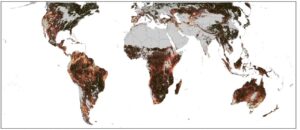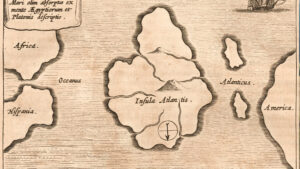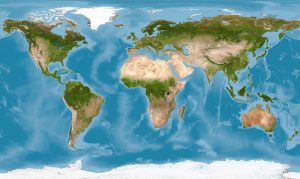Google Maps has revolutionized the way we travel by showing us the best route from A to B and the average time it takes to get there. You might think that maps with estimated times are a new concept. On the contrary, they date back to the 19th century, when industrialization was in full swing.
The word isochrone comes from the Greek words meaning equal time. An isochrone map, also known as a travel time map, depicts how long it takes to travel somewhere from a given point. These maps are characteristically very colorful and can illustrate the times in minutes, hours, or days. These maps have changed over the years, reflecting the latest developments in transportation.

Francis Galton’s 1881 isochrone map.
Early examples
One of the earliest examples of an isochrone map is Sir Francis Galton’s Isochronic Passage Chart, which he published in 1881 for the Royal Geographical Society. Galton was a polymath (and depressingly, a eugenicist) who delved into everything from mathematics to meteorology. He had a particular affinity for mapmaking and invented the first weather map. His Isochronic Passage Chart is the first known publication to show time distances from London to anywhere else in the world.
According to Galton, travelers should “use postal or other rapid or regular conveyances.” He based his times on the assumption that “seasons are favorable” and that there are no major delays.
Galton calculated his times by analyzing postal routes, steamboat voyage records, and collating recent anecdotal experiences of those traveling from London. The green zone showed areas that took less than 10 days, yellow 10-20 days, pink 20-30 days, blue 20-40 days, and brown more than 40 days.
One year later, E. Martin and E. Chevaillier published an isochrone map of France. The Cartes des communications rapides entre Paris et le reste de la France showed travel times from Paris to the rest of France by rail. Each color gradient represented one hour on the train.

Isochrone map of France in 1882. Photo/Map: E. Martin and E. Chevaillier
Travel times halve
In 1914, cartographer J. Bartholemew published an updated version of his 1889 isochrone world map called the Isochronic Distance and Map Chart. The map was dramatically different, as travel times were now significantly shorter. In 1881, trips through Europe took around 10 days, by 1914, travel time had halved.

Isochrone map of the world by J. Bartholomew in 1914. Photo/map: J Bartholomew
This change was because of faster shipping routes, rail networks, buses, and cars. The first commercial flight also took place in 1914. These massive changes to travel can be clearly seen when comparing Galton and Bartholomew’s maps.
In the early 1920s, the Metropolitan Town Planning Commission of Melbourne published an isochrone map. Population and economic growth from the mid-1800s to the early 20th century had made Melbourne one of Australia’s largest cities. The map illustrated the amount of time, in minutes, to get to the city centre by either tram or train. This map shows Melbourne’s advanced urban rail systems and also gives the reader more travel choices.
Over the years, travel times on isochrone maps grew shorter, from days to hours, and eventually to minutes.

Isochrone map of Melbourne in the 1920s. Photo: State Library of Victoria
Isochrone maps as standard
Today, travel time is down to a matter of hours and even the longest journeys by plane rarely exceed two days. Isochrone maps play an integral part in our everyday lives. Corporations use them to plan the construction of new apartment blocks and real estate agents use them to determine accessibility to public services when pitching to prospective home buyers. They come in handy when choosing a good hotel or looking for a popular attraction.
Popular platforms like Google Maps, Rome2Rio, Mapnificent, and Mapumental give us instant information on travel times by car, train, plane, boat, on foot, and when cycling.






